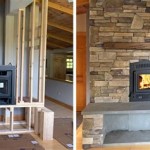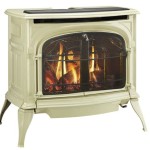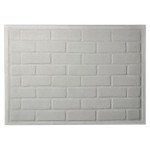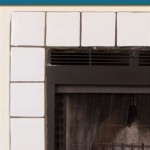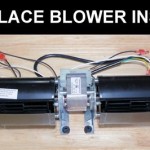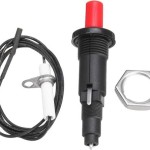```html
Steel Fireplace Insert Repair: A Comprehensive Guide
Steel fireplace inserts offer an efficient and aesthetically pleasing way to upgrade an existing masonry fireplace. These inserts are essentially enclosed fireboxes designed to fit within the opening of the traditional fireplace, boosting heating efficiency and reducing the amount of harmful emissions released into the environment. However, like any mechanical appliance exposed to high temperatures and demanding conditions, steel fireplace inserts are susceptible to wear and tear, requiring occasional repair and maintenance. Understanding the common issues that arise and the appropriate repair techniques is crucial for homeowners to ensure the longevity and optimal performance of their steel fireplace insert.
A steel fireplace insert's primary function is to provide supplemental heat. It achieves this through a combination of radiant heat from the steel firebox itself and convective heat generated by a blower that circulates air around the heated firebox and into the room. The steel construction, while durable, can be affected by prolonged exposure to intense heat, fluctuating temperatures, and corrosive byproducts of combustion. Therefore, regular inspections and timely repairs are essential to maintain the insert's structural integrity and operational effectiveness.
Common Issues in Steel Fireplace Inserts
Several common problems can plague steel fireplace inserts. These issues can range from minor inconveniences to significant safety hazards, requiring different levels of expertise to address. Proactive identification and resolution of these issues are critical to preventing further damage and ensuring the safe operation of the insert.
One of the most frequent problems is corrosion. The combustion of wood and other fuels produces corrosive gases and acidic creosote, which can attack the steel components of the insert over time. This corrosion weakens the metal, potentially leading to leaks in the firebox or chimney connector, compromising the insert's structural integrity and allowing dangerous gases like carbon monoxide to escape into the home. Rust is a visible sign of corrosion, but internal corrosion can be more difficult to detect without a thorough inspection.
Another common issue involves cracks in the steel firebox. Extreme temperature fluctuations, particularly rapid heating and cooling cycles, can cause the steel to expand and contract, leading to stress fractures over time. These cracks can compromise the air-tight seal of the firebox, reducing efficiency and potentially allowing smoke and gases to leak into the room. Hairline cracks might initially seem insignificant, but they can quickly widen and deepen, posing a significant safety risk if left unaddressed.
Failure of the blower motor is another frequent problem. The blower motor is responsible for circulating warm air into the room, and its malfunction directly impacts the insert's heating efficiency. Blower motors can fail due to overheating, dust accumulation, or simple wear and tear. Signs of a failing blower motor include reduced airflow, unusual noises, or complete cessation of operation.
Finally, damaged or deteriorated firebrick is a common concern. Firebrick lines the interior of the firebox, protecting the steel from the direct impact of the flames and helping to retain heat. Over time, firebrick can crack, crumble, or become dislodged due to the intense heat and mechanical stress. Damaged firebrick reduces the insert's efficiency and can accelerate the deterioration of the steel firebox itself.
Inspection and Diagnosis
Regular inspection is paramount for identifying potential problems before they escalate. A thorough inspection should be conducted at least once a year, preferably before the start of the heating season. This inspection should encompass all aspects of the steel fireplace insert, including the firebox, chimney connector, blower motor, and firebrick lining.
The firebox should be visually inspected for signs of corrosion, cracks, and weld failures. A flashlight can be helpful for illuminating hard-to-reach areas. Any signs of rust, pitting, or distortion should be noted. Cracks can be difficult to see, so carefully examine all seams and joints. Any indications of smoke leakage around the firebox door or chimney connector should also be investigated.
The chimney connector, which connects the insert to the chimney flue, should be inspected for signs of corrosion, damage, and proper installation. Ensure that all connections are secure and that there are no gaps or leaks. Creosote buildup in the chimney connector can contribute to corrosion and increase the risk of a chimney fire. A professional chimney sweep should be hired to clean the chimney and connector on a regular basis.
The blower motor should be tested to ensure that it is functioning properly. Listen for any unusual noises, such as squealing or grinding, and check the airflow to ensure that it is consistent and adequate. The blower motor may require cleaning to remove dust and debris that can impede its performance. Consult the manufacturer's instructions for specific cleaning procedures.
The firebrick lining should be carefully inspected for cracks, crumbling, and dislodged bricks. Minor cracks can be repaired with refractory mortar, but severely damaged or missing firebrick should be replaced. Ensure that the replacement firebrick is the correct size and type for the insert.
Repair Techniques for Steel Fireplace Inserts
The appropriate repair techniques for steel fireplace inserts depend on the nature and severity of the problem. Some minor repairs can be performed by homeowners with basic tools and skills, while more complex repairs should be entrusted to qualified professionals.
For minor surface rust, wire brushing can remove the loose rust and prepare the surface for a protective coating. Apply a high-temperature paint specifically designed for use on steel fireplaces. This paint will help to prevent further corrosion and improve the appearance of the insert. Always follow the manufacturer's instructions for application and drying times.
Small cracks in the firebox can sometimes be repaired with high-temperature epoxy or weld filler specifically designed for steel. Clean the area around the crack thoroughly and apply the epoxy or weld filler according to the manufacturer's instructions. This type of repair is generally considered a temporary solution, and it is important to monitor the repaired area for any signs of recurrence. Welding larger cracks typically requires the skill of a professional and may necessitate removing the insert from the fireplace.
Blower motor repair can range from simple cleaning to complete replacement. If the blower motor is simply dirty, it can be cleaned with a vacuum cleaner and a soft brush. If the blower motor is damaged or malfunctioning, it may need to be replaced. Replacement blower motors are typically available from the insert manufacturer or from aftermarket suppliers. Ensure that the replacement blower motor is compatible with the insert and that it is installed correctly.
Damaged or missing firebrick can be replaced with new firebrick of the appropriate size and type. Remove any loose or damaged firebrick and clean the area thoroughly. Apply refractory mortar to the back of the new firebrick and press it firmly into place. Allow the mortar to cure completely before using the insert. Refractory mortar must be heat resistant and able to withstand the high temperatures within the firebox.
Addressing corrosion requires a more intensive approach. Depending on the extent of the corrosion, it may be possible to remove the affected areas with a grinder and apply a protective coating. In more severe cases, the corroded sections may need to be cut out and replaced with new steel. This type of repair should be performed by a qualified welder with experience working on steel fireplaces.
Any repairs involving the chimney connector should be performed or inspected by a qualified chimney sweep. The chimney connector must be properly installed and sealed to prevent the escape of dangerous gases. Damaged or corroded sections of the chimney connector should be replaced with new components that meet the applicable safety standards.
It is important to emphasize the role of professional inspection and repair. Complex repairs, such as welding cracked fireboxes or replacing corroded components, should be performed by qualified professionals with the necessary skills and equipment. Attempting to perform these repairs without the proper expertise can be dangerous and can further damage the insert. A certified technician can properly diagnose the problem and implement the most effective and safest repair solution.
Beyond the above repairs, regular cleaning and maintenance are vital for prolonging the life of a steel fireplace insert. Periodically removing ash buildup from the firebox prevents corrosion and maintains efficient combustion. Proper ventilation helps to minimize creosote buildup in the chimney, and using seasoned firewood reduces the amount of smoke and emissions. Following the manufacturer's recommendations for fuel type and burning practices also helps to extend the lifespan of the steel fireplace insert.
```
Firebox Repair Rebuilding Louisville Expert Certified Fireplace

How To Repair Steel Inside Of Fireplace All Valley

How To Re A Cast Iron Fireplace Direct Fireplaces

How To Re A Cast Iron Fireplace Direct Fireplaces

How To Re A Cast Iron Fireplace Direct Fireplaces

Fireplace Inserts Everything You Need To Know Full Service Chimney

Damaged Fireplace Repair Archives Antique Fireplaces Blog

How To Re A Cast Iron Fireplace Direct Fireplaces

How To Re A Cast Iron Fireplace

Why Get A Fireplace Insert Wood Gas Inserts In Tn Al
Related Posts

